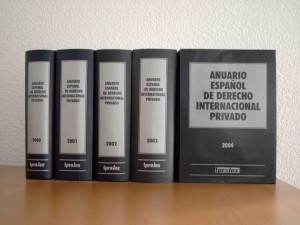Call for Papers: 10th Young International Lawyers Research Forum (Univ. of Catania, 24-25 January 2013)
A call for papers has been issued for the 10th edition of the Young International Lawyers Research Forum, which will be hosted by the University of Catania on 24-25 January 2013. The deadline for submission of abstracts is Saturday 24 November 2012. Here’s a presentation of the event (the full text of the call is available in Italian and English):
The meeting, launched in Italy in 2003, is intended to provide a platform for young international legal scholars to discuss ongoing research papers and materials linked to the topics annually offered. The theme of the coming YIL Research Forum is A Lackland Law? Territory, Effectiveness and Jurisdiction in International and European Law.
The general topic of the current edition will be analysed through three sub-themes, each one exploring different dimensions and developments of rules and principles governing “territoriality” issues at international and supranational levels: 1) Crisis of Territorial Order and International Law; 2) Beyond Territories. International Law, Jurisdictions and New Geographies of Spaces; 3) End or Return of Territories? The New Frontiers of the Territorial Enforcement of Law.
These sub-themes will be discussed during three panel sessions and a final round table. The thematic sessions will host a key-note guest speaker, interventions of paper-givers (selected through a peer-reviewed process) and the conclusive remarks of a guest-discussant.
The Organising Committee invites proposals for papers to be presented at the Research Forum. The Call for Papers is now open and the deadline for submission of abstracts is Saturday 24 November 2012. All younger academics and legal professionals are encouraged to submit abstracts. The selected papers, the key-note lectures and the round table proceedings will be included in an edited volume on the theme of the Research Forum.
(Many thanks to Francesco Costamagna, University of Torino, for the tip-off)

